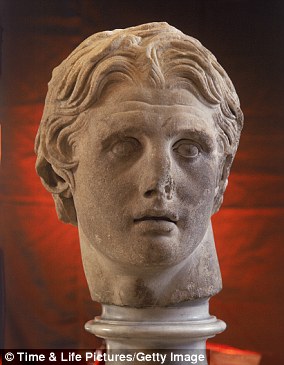Alexander the Great’s FATHER is found: ancient Greek tomb discovered in 1977 is confirmed to contain the remains of King Philip II
Nearly fifty years ago, archaeologists made an amazing discovery while excavating the ancient city of Vergina in northern Greece.
They found three royal tombs containing remains of Alexander the Great’s family, dating back to the 4th century BC.
At the time, they were considered the father, son and older half-brother of the great warrior.
But scientists say the father and half-brother are involved in a case of mistaken identity that has continued ever since.
In a new study, the experts now reveal ‘conclusively’ that the skeleton long identified as belonging to the half-brother is in fact the father, and vice versa.
Researchers claim to have finally identified the remains of Alexander the Great’s father, Philip II of Macedon. In the photo the bones of his left leg
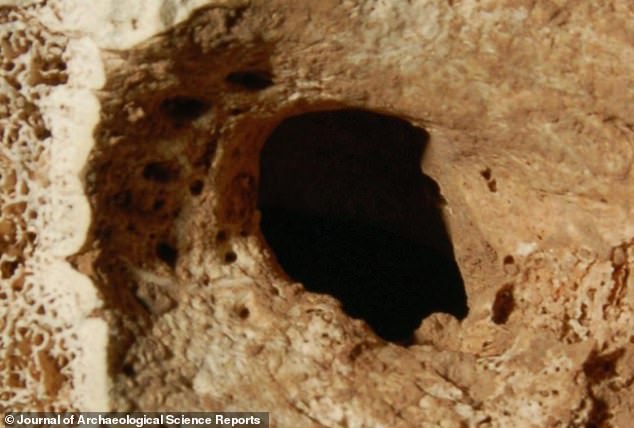
Part of the male distal femur of the knee at ‘Tomb I’ – the tomb containing the father of Alexander the Great (Philip II)
Unfortunately, the resting place of Alexander the Great itself remains a mystery.
The new study was led by Antonios Bartsiokas, professor of anthropology at the Democritus University of Thrace in Greece.
“The skeletons studied are among the historically most important in Europe,” say Professor Bartsiokas and colleagues.
“We have focused our discussion on the scientific facts and historical evidence that influences the acceptance or rejection of the location of King Philip II of Macedon.”
Alexander III, commonly known as Alexander the Great, was a king of Macedonia, a state in northern ancient Greece between 336 and 323 BC. – and is today considered one of the most successful military commanders in history.
His father, Philip II of Macedon, ruled the Old Kingdom before him, from 359 BC until his assassination in 336 BC.
Although the resting place of Alexander the Great is unknown, in 1977 researchers discovered three tombs in Vergina – Tombs I, II and III.
At the time, archaeologists proposed that they contained the remains of Alexander the Great’s father (Philip II), his son (Alexander IV) and his half-brother (Philip III of Macedon).
But which grave contained which person has been a “long-running debate,” according to the study.
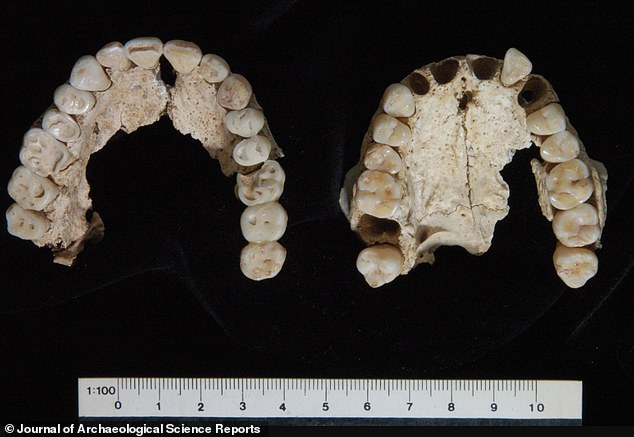
Teeth from Grave I: The left is a ‘robust middle-aged adult male’ and the right is a young adult female. Tomb I also contains the remains of a woman and a baby, which researchers believe are Philip II’s wife Cleopatra and their newborn child.

Bust of Philip II, king of Macedonia and father of Alexander the Great, on display in Copenhagen, Denmark

There has been a long-running debate over the identity of the inhabitants of the 4th-century BC royal tombs at Vergina, in northern Greece.
Most scholars agree that Tomb III belongs to Alexander IV, the teenage son of Alexander the Great, but the “strenuous debate” over the other two tombs “continues unabated.”
To settle the debate, researchers studied X-rays of the skeletons and referred to ancient writings about each figure, including their anatomical features and any physical problems.
They definitively identified Tomb I as containing Alexander the Great’s father and Tomb II as containing Philip III of Macedon – and not the other way around as previously thought.
Tomb I contains the remains of a woman and a baby, which researchers believe are Philip II’s young wife Cleopatra and their newborn child.
Professor Bartsiokas agrees that this should have been a ‘giveaway’, but instead scientists misunderstood her identity.
“They speculated that the female was Euridice (Philip III’s wife), but they did not give any explanation for the newborn,” he told MailOnline.
‘It is an established fact in the ancient sources that Cleopatra was murdered together with her newborn child.’
Crucially, documents reveal that Philip II of Macedon suffered a severe traumatic injury to the left knee, which the skeletal evidence confirmed.
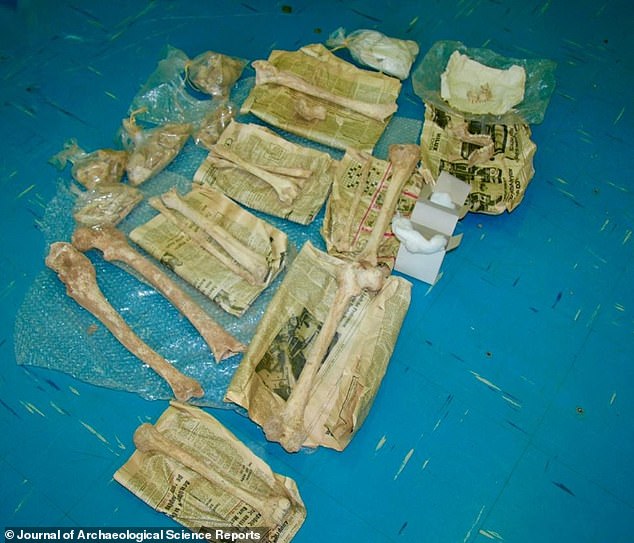
Bone elements from Tomb I (so far wrongly identified as belonging to Alexander the Great’s half-brother (Philip III of Macedon)
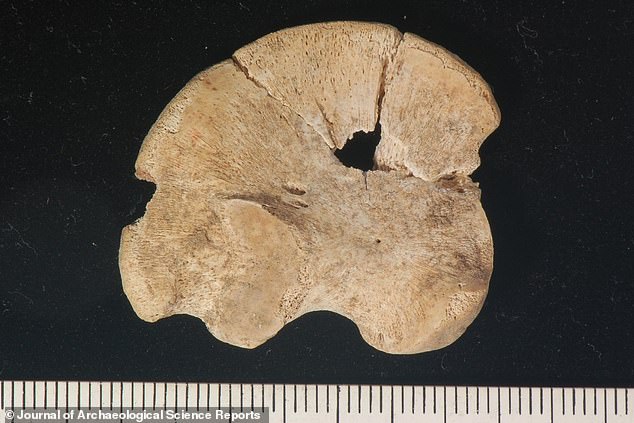
Pictured: The unfused ilium (one of the three bony components of the hip bone) of the Tomb I neonate
“A knee fusion was found in the male skeleton of Tomb I, consistent with the historical evidence of King Philip II’s lameness,” the new study points out.
‘These conclusions refute the traditional speculation that Tomb II belongs to Philip II.’
Meanwhile, no evidence of trauma to the knee was found in the male skeleton of Tomb II.
Furthermore, Philip II was known to have had an eye injury that blinded him, but no signs of this were found in the remains in Tomb II.
Unfortunately, there were no signs of the damaged eye in Tomb I either, as that part of the skull has not been preserved.
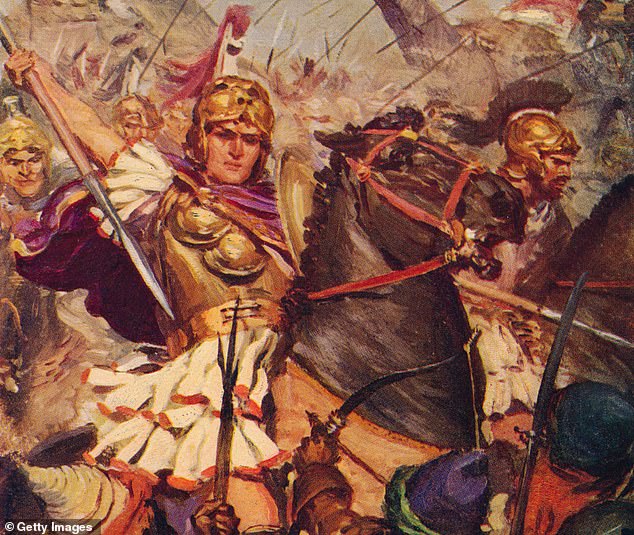
The forces of Alexander the Great (356-323 BC) are depicted fighting those of the Indian Raja Porus (active 327-315 BC) on the banks of the Hydaspes River (now the River Jhelum in Pakistan)
But Professor Bartsiokas and colleagues think the available evidence is clear – and that Alexander the Great’s father is in Tomb I.
“We have provided compelling evidence from multiple sources that proves beyond doubt that Philip II was buried in Tomb I,” they say.
‘Our hypothesis of Philip II in Tomb I remains unchallenged in the peer-reviewed literature and we believe the available evidence is compelling.’
The research was published in Journal of Archaeological Science: reports.

